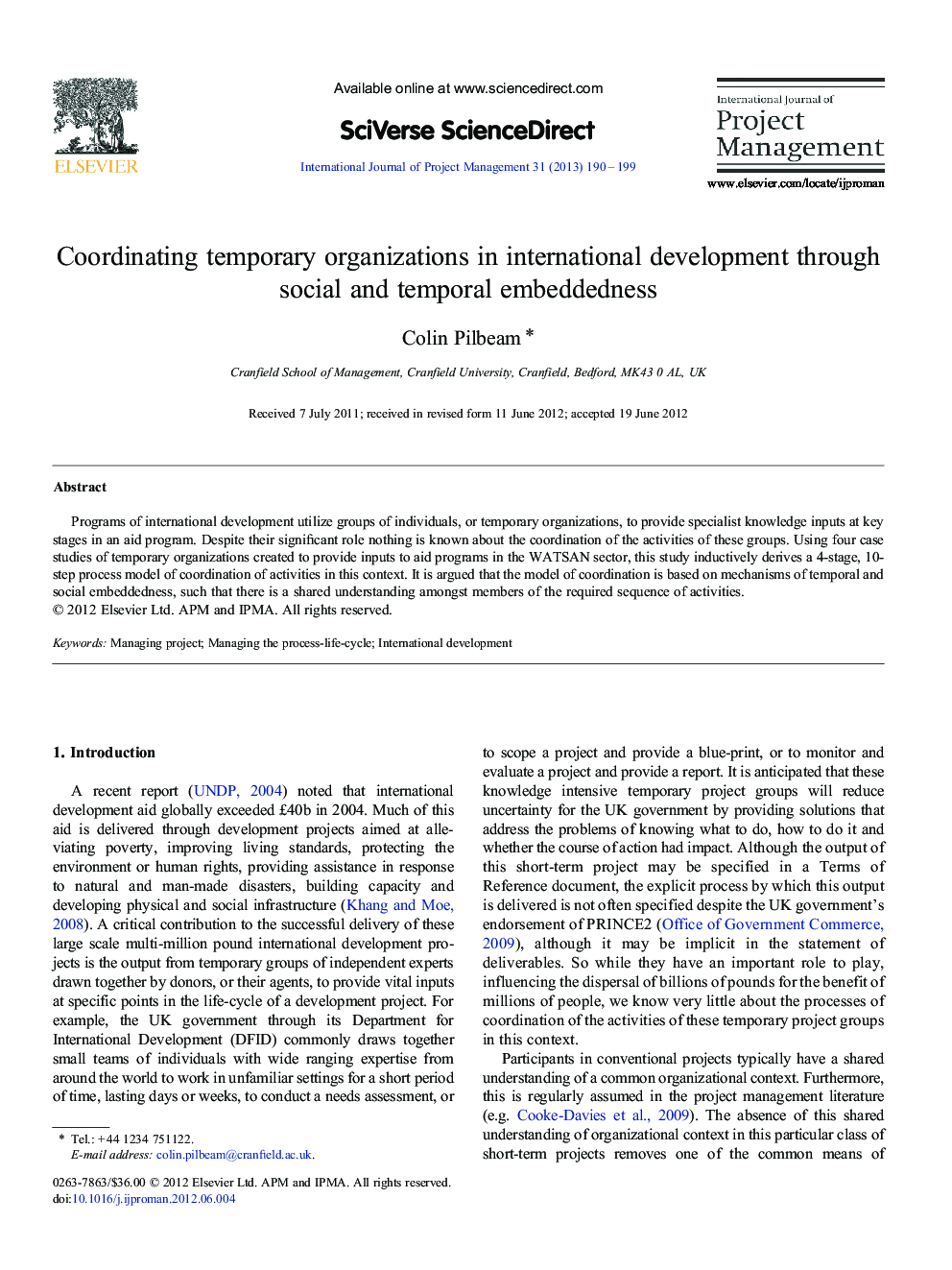| Article ID | Journal | Published Year | Pages | File Type |
|---|---|---|---|---|
| 276189 | International Journal of Project Management | 2013 | 10 Pages |
Programs of international development utilize groups of individuals, or temporary organizations, to provide specialist knowledge inputs at key stages in an aid program. Despite their significant role nothing is known about the coordination of the activities of these groups. Using four case studies of temporary organizations created to provide inputs to aid programs in the WATSAN sector, this study inductively derives a 4-stage, 10-step process model of coordination of activities in this context. It is argued that the model of coordination is based on mechanisms of temporal and social embeddedness, such that there is a shared understanding amongst members of the required sequence of activities.
► Very temporary project teams contribute to international development projects. ► I investigate the coordination processes of very temporary project teams. ► Coordination is achieved through temporal and social embedding.
